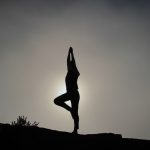OFP, Optimal Foetal Positioning, is just one of the many arcane acronyms that seem to fill pregnant life: PGP (Pelvic Girdle Pain), ROA (Right Occiput Anterior), LOA (Left Occiput Anterior), AIMS (Association for Improvements in the Maternity Services) and many, many more. If given a choice to pick my favourite, I would definitely go for UFO.
I Need Space, Mum!
Yes, pregnancy sometimes makes one feel as if she just landed on a very strange planet inhabited by annoying, fast-moving creatures. The UFO I have in mind, however, has nothing to do with flying saucers and green men. In fact it goes hand in hand with OFP, which happens to be my second favourite, and which I’ll talk about first.
OFP refers to a position most frequently assumed by babies if they are given the possibility to do so. Your midwife will refer to it as LOA, when your baby’s back is to your left side and she/he is facing between your right hip and spine. Jean Sutton and Pauline Scott, pioneers in the field, state that:
Optimal foetal positioning is encouraging the baby to move into the optimal position for labour and birth.
For this to happen, your baby needs space to move around and spin in your womb.
Modern Versus Traditional Pregnancies
Traditionally, pregnant mums have spent most of their time on the move. Our nomadic ancestors rarely vegged out in front of Game of Thrones. Up until the domestic revolution of 1960s, women were constantly moving: scrubbing floors on hands and knees, squatting in the fields or over housework, or picking up toddlers (mind you, we still do that). While freeing women from domestic drudgery had many positive social consequences it wasn’t great news for the process of being in labour.
Living a largely sedentary lifestyle — using cars, being at the office and in front of various screens for hours on end — means quite cramped living conditions for baby. If you sit a lot, your future bundle of joy’s bottom may tend to gravitate down towards your cervix. Or, their spine may turn towards your own, resulting in a back to back position and often produces back pain in labour. This is not to say that sitting down a lot causes breech or back to back position, but it definitely won’t help.
What Does Optimal Foetal Positioning Look Like?
It’s never too early to start thinking about OFP, although we generally start to focus on it more starting the 34th week of pregnancy. This is where we use get to be mindful of the UFO of pregnancy: being Upright, Forward and Open. Focussing on UFO increases your natural mobility and allows for maximum expansion of space and movement in our pelvis. Think of the old-school scrubbing the floors stance: Mum is on her hand and knees, tummy forward and knees lower than her bottom. This allows for the baby to lay down comfortably with the spine back to her mum’s belly. It also gives the baby plenty of space to spin and move around!
You don’t have to revert back to a Victorian mode of giving your floor a wash, though. It’s estimated that by moving, squatting, standing and generally being active, we can create 28% more space in our pelvic region. The best yoga poses to assist with OFP are:
- The All-Fours Family. Positions like Cat Pose, single/alternate leg and arm stretches, arm threading, Child’s Pose and Downward-Facing Dog
- Squatting. You can choose to squat deeply with or without props or be sat on a low stool.
- Use a Birthing Ball. Hip circles while being sat on the ball or leaning forward on it are great.
- Forward Bends And Stretches. It’s best if you use a wall for support.
(A quick note here: please make sure your midwife gives you a green light for doing any of these – as always, these poses are not suitable for all pregnant mums!)
If you do need to sit a lot and a you feel that a regular yoga class is not enough, it may help to use a birthing ball instead of a chair. Sitting back to front on your chair (cowboy style, sadly, won’t work with most office chairs) or putting a wedge cushion under your bottom works best. Standing up a lot and swinging your hips in a figure of eight at your desk is also a very good idea (you’re pregnant, no one will judge). If you fancy a funky activity, consider rebozo sifting.
Too Many Acronyms!
Why is helping the baby to assume back-to-your-front position so important? According to Spinning Babies, Optimal Foetal Positioning often means:
- the easiest foetal position for the start of labour
- helps the baby be in the smallest diameter to fit the pelvis
- the baby’s head can mould to fit the pelvis most effectively, as needed
- The baby’s back can curve most effectively in this position
- LOA position is optimal for descent of the baby into the birth canal during labour
As a result, it may contribute to a shorter, easier labour for mum and the baby with fewer interventions, or even none at all! Sometimes babies persistently refuse to rotate into LOA despite your best efforts. Rest assured that, with the right support, it is still possible to have a great experience with a natural active birth.
Finally, pregnancy yoga can also be one of those tools that help babies turn. If the baby is impervious to all this circling, walking, squatting and cajoling, the hard work won’t go to waste (although if you think the baby is stubborn now, just wait for toddlerhood). Prenatal classes are holistically focused on the well-being of your whole person and helpful to build strength for the postnatal period. So, if your baby has persistently plonked itself on their bum, focus on the breath and surrender to the experience.













